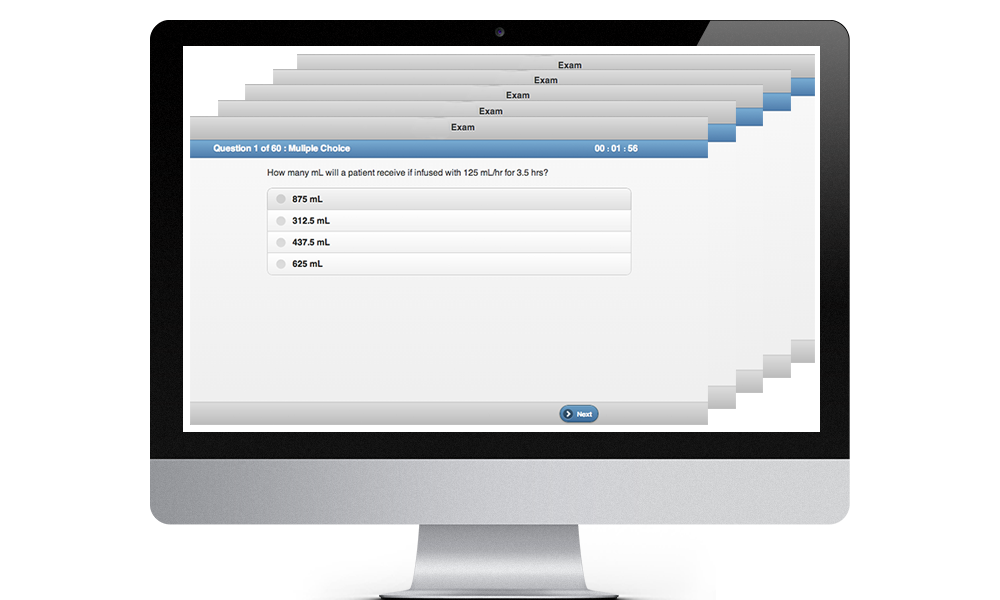Paramedic Practice Test
Question 1 |
A 50 year old female COPD patient in need of RSI. | |
Treating a 33 year old male who is suffering from alcohol withdrawal symptoms, a blood pressure of 150/99, and a respiratory rate of 22/minute. | |
An extremely agitated 25 year old female who was in a car wreck, cant slow down her breathing, and is severely hypotensive. | |
A 20 year old male having an episode of status epilepticus with a history of barbiturate abuse. |
Question 2 |
the suppression of atrial and ventricular rhythms. | |
increasing the recovery period after repolarization. | |
the slowing of conduction in myocardial tissue. | |
the blockage of sodium through the membrane pores. |
Question 3 |
manure gas. | |
fertilizer. | |
organophosphates. | |
radiant pesticides. |
Question 4 |
about the same as the lateral diameter. | |
about 1/3 of the lateral diameter. | |
has no correlation regarding to the lateral diameter in regard to a healthy infant. | |
about half of the lateral diameter. |
Question 5 |
Maxillary bone. | |
Nasal Bone. | |
Zygomatic bone. | |
Orbital bone. |
Question 6 |
The Sinoatrial nodal artery. | |
The right coronary artery. | |
The left circumflex artery. | |
The left anterior descending artery. |
Question 7 |
They have less subcutaneous fat than adults. | |
They have a larger surface to volume ratio in comparison to adults. | |
They have a lower muscle mass than the adult. | |
They have less hair on their heads then adults. |
Question 8 |
asthma. | |
croup. | |
diphtheria. | |
pertussis. |
Question 9 |
tends to bleed less due an increased production of white cells and a decrease in platelets. | |
tends to bleed more due an increased production of platelets and a decrease in white blood cells. | |
tends to bleed more due an increased production of white cells and a decrease in platelets. | |
tends to bleed less due an increased production of platelets and a decrease in whit cells. |
Question 10 |
The warm zone. | |
The hot zone. | |
The cold zone. | |
The exclusion zone. |
|
List |
NREMT Paramedic Exam
Sign up today for our National Registry Paramedic Practice Exam Program and join the thousands of other Emergency Medical Technicians and Paramedics that passed their certification exam by studying with Med Preps. Improve your chances of passing the first time to 98.5% with our proven system and our database of 1000+ Paramedic practice test questions.
Our subject matter experts have written questions to mimic the content and test format you will see on the real National Registry Paramedic exam. Take full-length EMT Paramedic practice tests or focus quizzes and track your progress to target weak knowledge areas with our feedback, reporting, and explanations.
With our EMT-Paramedic Practice Test Program, you will have a comprehensive practice program that lets you study at your own pace with access to our online tools 24/7. You can take unlimited number of Paramedic practice tests and never see the same test twice. Our tracking system will let you review your progress over time so you can see improvement and know when you are ready for the real EMT-Paramedic test.
We’re so confident in our program that we offer a 100% pass guarantee. Click below to take an EMT Paramedic practice test, sample our proven method of EMT-Paramedic test prep, sign up and join the thousands of other Emergency Medical Technicians and Paramedics that passed their Emergency Medical Technicians – Paramedics Certification Exam on their first try.






